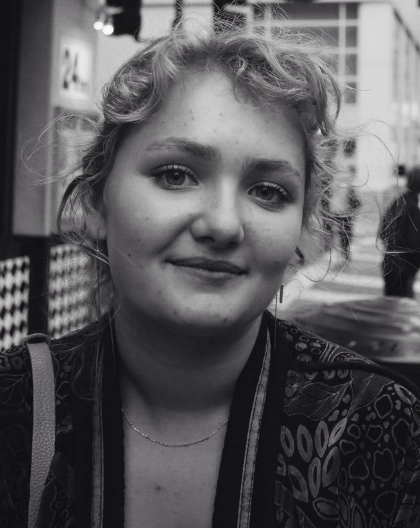|
Author: Florence Almquist Checa LGBTQ+ adolescents are most at risk for self harm and suicide. Some of the key factors that influence whether LGBTQ+ individuals will self harm are: homophobic abuse, social isolation, early identification as LGBTQ+, and conflict with family or peers about sexual identity. Many LGBTQ+ individuals don’t seek help and if they do, they often seek it from untraditional places, like the internet or LGBTQ+ safe spaces. Oftentimes, it is misunderstood why many LGBTQ+ adolescents don’t seek in person help. People often think it is simply because there aren’t places that these teenagers can ask help from which isn’t the case. McDermott et al in 2014 researched why so many LGBTQ+ youth actually don’t seek help. By analyzing online forums, they concluded that many LGBTQ+ youth seeking help for their depression and anxiety are transgressing “the intersecting social norms of adolescence, rationality and heterosexuality.” They are breaking the boundaries of being a “healthy minded”, independent citizen and of loving the “wrong” gender. Therefore, they are sometimes perceived as a threat to society by some individuals, which leads this kind of youth to internalize this homophobia into shame. Furthermore, many LGBTQ+ youth don’t want to be perceived as “weird” or “strange”, as dealing with mental health issues and homophobia is a lot to handle. This is why these youth often find comfort in online communities. A question worth asking then is how we as a society and as psychologists can make these young people feel more understood, what can we do to make them feel that they can trust counseling services offered. McDermott and his colleagues discovered that a large issue is that many current psychiatric models individualize the problem instead of also looking at the social, political, cultural and economic harmful structures that are at play that influence depression/anxiety/internalized homophobia. Stigma, discrimination, social justice, and social exclusion are all topics that are important in the conversation of mental health in order to have a richer understanding of a teenager’s individual case. However, they are sometimes lacking when an LGBTQ+ issue is being diagnosed with depression/anxiety. These kinds of mental issues are not isolated events, but rather a part of a larger phenomenon at play. As psychologists, it is important to look at the bigger picture to further understand an individual case  It is especially hard for these LGBTQ+ youth to be understood since there is oftentimes already so much societal judgement on teenage-hood itself. Adolescence is often seen as a linear time of biological and cognitive changes, when in fact it is a tumultuous time where normalcy is often challenged. McDermott and his team explain that adolescence is a “technology to produce a certain kind of rational individual”, pressuring teenagers to feel like they need to grow up and get a grasp on their emotions instead of analyzing them and building a better mental health. By analyzing online forums, McDermott and his colleagues found that some LGBTQ+ youth feel they have failed as citizens that should comply with social norms and hence why there is so much internalized guilt and shame. When it comes to thinking about solutions to this issue, an obvious one seems to be LGBTQ+ sensitive services, but that still does not account for the social pressure that is burdening this youth. Perhaps the most long term efficient solution is to keep trying to change the social climate regarding LGBTQ+ individuals, so as not to make them feel “crazy” or “not acceptable.” The best way this can be done is by education and building tolerance and acceptance. Some useful resources for LGBTQ+ individuals are the “It Gets Better” website which encourages these youth to share their stories and instill hope in other struggling teens. Another helpful resource is the “Q Card Project and Q Chat Space” where LGBTQ+ teens can seek psychological help, and ask questions amongst each other to create online support groups. Lastly, “The Trevor Project” is a national organization that helps with crisis intervention and suicide prevention. Helpful links:
Source: McDermott E. (2014). Asking for help online: Lesbian, gay, bisexual and trans youth, self-harm and articulating the “failed” self. Health: An Interdisciplinary Journal for the Social Study of Health, Illness and Medicine, 19(6), 561–577. doi:10.1177/1363459314557967
0 Comments
The campaign cost millions of dollars and did little to prevent youth from falling into the drug and alcohol trap. One of the largest reasons for its failure is that the campaign did not take into account the reasons WHY some youth fall victim to addiction more readily than others. The factors that lead to drug addiction in adolescents have typically been at play for years before the fateful moment that they are confronted with a choice to use substances.
A fundamental fact of addiction is that it is a childhood disease and must be addressed just like any other early onset chronic condition via early intervention. In this video Phil Boissiere, MFT helps parents/caregivers get clear answers on what drugs are, why they work, and which children/teens are at the highest risk of addiction and why. Parents and caregivers will walk away with a reality based proactive model of prevention and strategies to employ that uses a child’s interests and strengths combined with Emotion Coaching to guard against the substance use trap. Please take a moment to also visit the http://www.sensibleprevention.com and share this valuable information with your family, friends, and community. You can also join the conversation on Facebook at http://www.facebook.com/sensibleprevention or on Twitter at http://www.twitter.com/preventnow . In a recent study carried out by the Sutton Trust, it was found that among the 14,000 US children that took part in the study, 40% did not possess a strong and secure attachment with their parental figures. Secure attachment has been shown to develop from the simple act of a parent paying attention to the needs of their child, thereby allowing for a nurturing and loving relationship to be created between the parent and child. These relationships help the child to be able to better manage their own emotions and are used as the template from which the child learns and develops cognitively, emotionally and socially. Children with secure attachments are less likely to be depressed, to exhibit behavioral problems such as aggression, and to display defiance and hyperactivity. This is because at a young age, if a child cries and receives a response from their parents, they learn their needs will be met. Oppositely, children who don’t receive such responses begin to think of the world as an unsafe place and tend to exhibit defensive behaviors to combat their such as closing themselves off from the world or acting out in school.
By: Shilpa Jujjavarapu Source: http://psychcentral.com/news/2014/03/28/many-u-s-kids-lack-secure-attachment-face-future-hurdles/67753.html
After growing up with the same parent or parents for so many years, it can be really awkward and difficult for the children when one of them remarries. A way to help is to have the biological parent be the main disciplinarian, while the step-parent takes on a camp counselor role, which includes being in charge of the children, supervising them, but not really dishing out punishments, but telling the child’s parent or the camp leader what the child is up to, both the good and the bad. This should go on until the step-parent and the child are able to build up the type of relationship required, so the step-parent can place punishments, and the child respects the step-parent enough to follow through, which may take about two to five years. Other tips include moving into a new home, so it becomes “our” home, and not “their” home. Couples who have remarried stated having a shared pool of money works better than keeping their money separate. Also, children respond best to verbal displays of affection from the step-parent, instead of physical displays of affection. When the couple shows each other affection, it may be confusing to the children, who are used to their biological parents, not one of their parents and a stranger. The parents, therefore, should have dates and go out together, while leaving the children behind. This helps children cope with the changing parental figures in their life, and allows them to ease into their changing home environment.
http://www.apa.org/helpcenter/stepfamily.aspx Have you ever felt guilty for yelling at your children for a minor mishap? Or felt like a bad parent for not being able to control or teach them? As it turns out, these feelings are completely normal.
Dr. Steven Stosny specializes in anger and how it affects relationships and families, and how it can sometimes lead to domestic violence. He recently wrote an article for Psychology Today describing how the anger we can often feel towards out children is actually a product of a feeling inadequate as a parent – and that’s a good thing. Any time someone tries something new, like raising a child, it can be a struggle and the individual probably isn’t good at doing it. It takes time and practice to master it, and the motivation to keep it up comes for the simple desire to not be bad at it. The feeling of inadequacy that we often feel is so uncomfortable and powerful that it drives us to be better. When we have this feeling with our children, it makes us want to become a better parent. Unfortunately, this feeling can often be confused with complete failure as a person, which can lead to anger. Anger can also be sparked when we blame our children for making us feel inadequate, when in reality they’re just trying to learn the ways of the world at the same time we’re trying to learn to be a parent. In some sad cases, this anger can lead to violence or child abuse when parents are forcefully trying to make their children change their behavior. So what makes some parents turn inadequacy into anger and violence while others turn it into motivation to become a better parent? The answer seems to be self esteem, according to Dr. Stosny. When self-value is low, we are much more susceptible to feeling frustrated, irritable and angry than when we hold a high opinion of ourselves. This means that how we react to our children’s misbehavior is entirely dependent upon ourselves. It’s not to say you should never feel angry with them, because it’s a normal human emotion, but excessive and unnecessary anger in the family can lead to bad dynamics or violence. In addition, if we are better able to control our anger be regulating our self-value, then our children will model that behavior on their own, thereby learning to regulate their own anger better. And fi that’s not a good enough reason, higher self esteem has been shown to have significant benefits in other aspects of our lives. In summary, sometimes feeling angry with your children is completely normal. It is a sign that you still have things to learn as a parent, and that you desire to be better for your children. Excessive feelings of anger, however, are unhealthy, and can be regulated for the good of your family. Dr. Steven Stosny’s full article can be read here: https://www.psychologytoday.com/blog/anger-in-the-age-entitlement/201508/anger-our-children |
ArchivesCategories |







 RSS Feed
RSS Feed